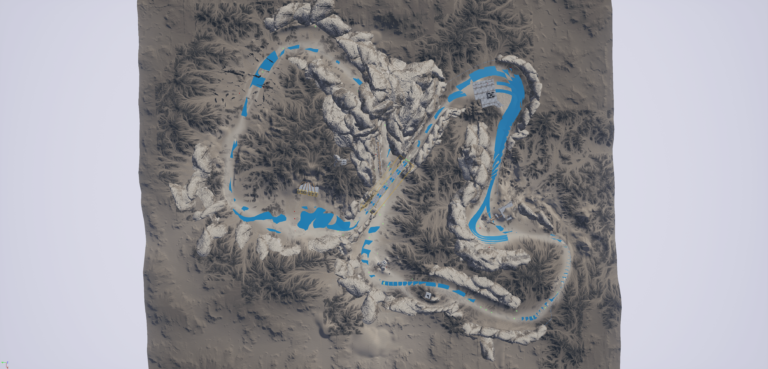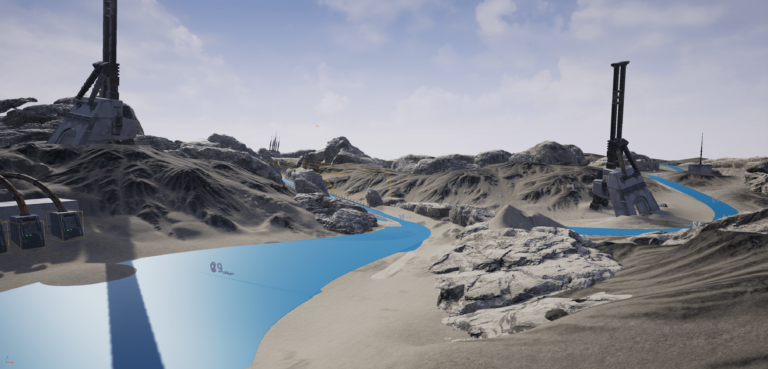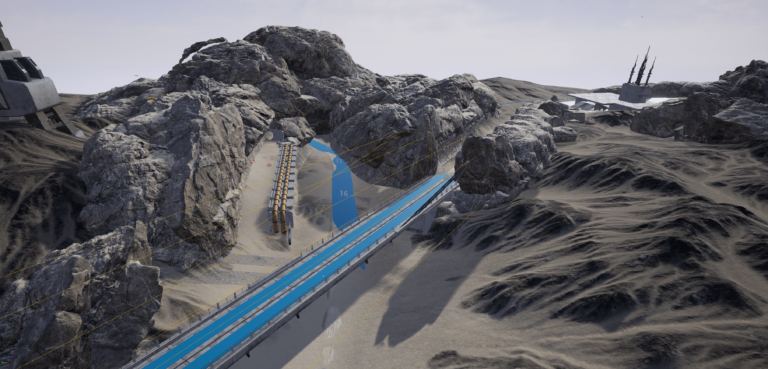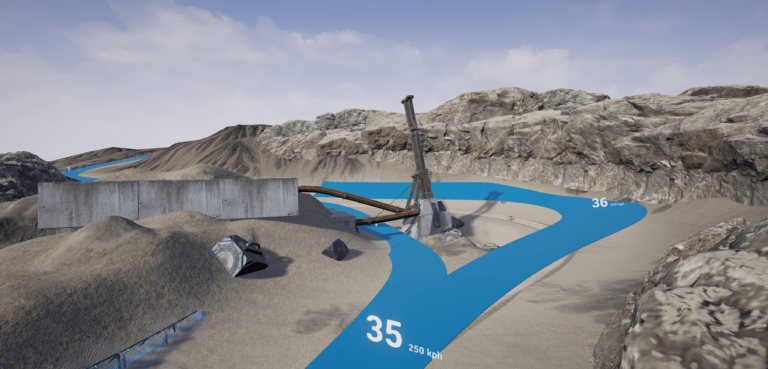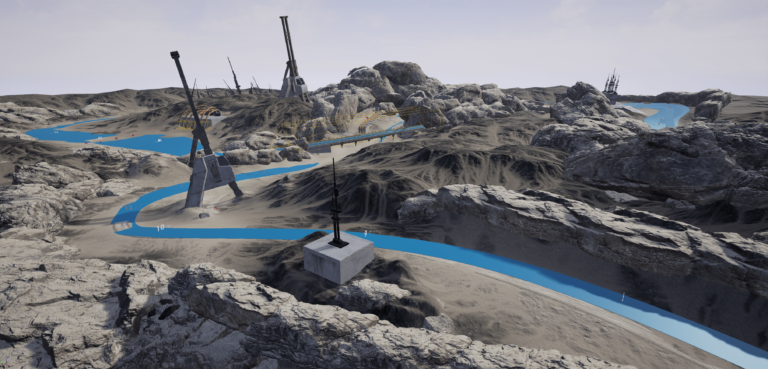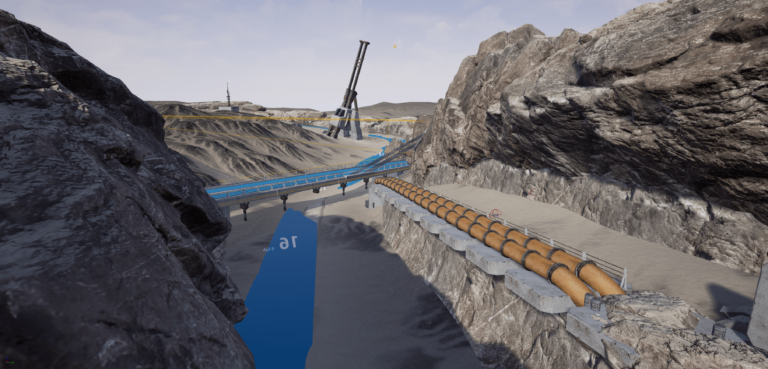“Inspired by the Rollcage games of 1999 and 2000, GRIP is a new IP for a new generation.
A return to the hardcore combat racer, bristling with heavy weapons and packing ferocious speed,
the game is an intense, sensory feast.”
Official Grip website
Client:
Caged Element

Genre:
Arcade Racer
Official Website:
Caged Element
Steam page:
Grip Steam
Team Size:
15-20
Programs Used:
Unreal Engine 4, P4V (versioning software)
Platform:
PC
Duration:
From: 7-07-2015
To: 12-01-2015
(+-6 months)
Project & Role Overview
Grip is an arcade racer, and is best be described as “Faster Mario Kart with guns and rockets”
Players can drive on walls and ceilings, and have to use combat orientated pickups to destroy their competitors (while going 400 Mph).
Caged element worked together with NHTV to create a steam early access version. However, I didn’t join this project as part of an course; rather, I took it on as an opportunity for further personal development.
The original brief for this project was:
“Design an 8 track level that can be driven in both directions. Use a pre-created environment. You are allowed to re-design and shape the terrain in order to create a better track; however, the final environment needs to retain its original spirit.”
I was given the terrain, and asked to create a track that was traversable in both directions. This resulted in me designing the track, and several iterations upon said track, set dressing it to a basic level and play testing it to a considerable degree. Later the track was implemented into the early access release of GRIP.
Level Design
- Track design and iterations based on client specification in Unreal 4.
- Set dressing of “Jahtra wastes” with limited assets.
- Distribution of power-ups on “Jahtra wastes”.
- Several level design iterations on “Jahtra wastes” based on play test sessions and client feedback.
- Play testing, bug tracking & fixing, and feedback on all playable levels.
Set Dressing
- Filled the track with minimum number of available asset available,
(3 types of rocks for natural assets). - Creative use of available assets allowed me to create a varied feeling of obstacles.
- Usage of hills and sand dunes to suggest greater structures covered in sand to give a grand and forgotten feeling.
- Set up of basic lighting.
The following video is not created by me, however it displays the level that I worked on.
All credit for the video goes to: Mason Taylor
Learned
- Level design & set dressing for arcade racers using spline based road and decoration systems.
- Implementing changes and iterations based on several forms of feedback.
- Creating levels based on pre-created environments.
- Adjusting Pre-created environments with landscaping tools
- Improving design and flow of levels through asset placement.
- Adjusting a figure 8 to feel interesting by introducing the unique mechanics of the game.
In Conclusion
This project taught me a lot of new design skills, because it was the first project where I worked on an arcade racer. It was intriguing to try to make an interesting scene with very little available assets, and it forced me to come up with creative solutions. It was also the first time where design was driven by art, which taught me to compromise and create designs based on art. In the end I would say it allowed me to dive deeper in how to design, balance, decorate, and play test arcade race tracks.
